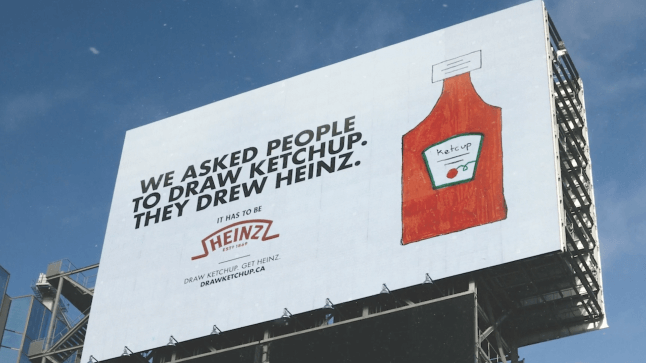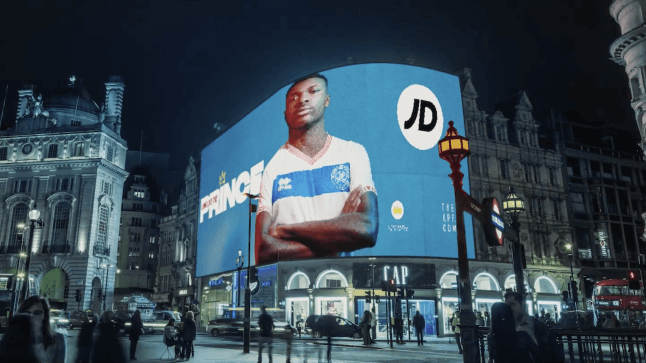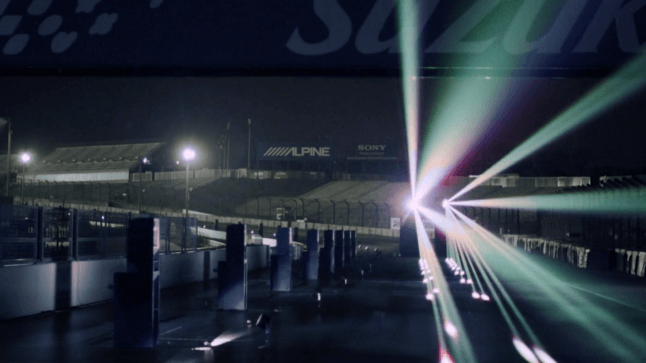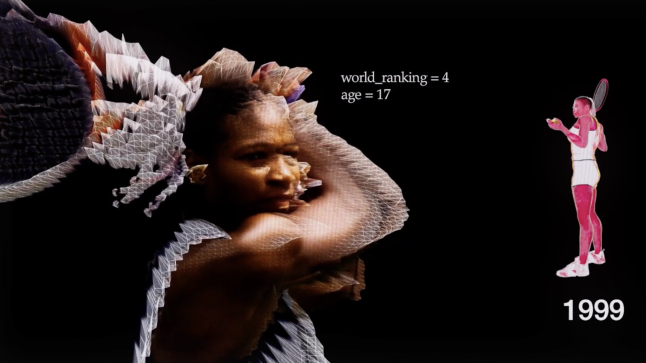REMEMBRANCE
Common Memories Provide
Strong Points of Connection.
Stokesia is delicate blue-purple flower that blooms between June and September. Its Japanese name is rurigiku, which translates into English as “violet-blue chrysanthemum”. In the ‘language of flowers’, Stokesia translates to “recall” or “reminiscence”. In western culture, blue and purple is also apparently said to represent “sadness”. The act of remembering, or reminiscing, because when we remind ourselves and immerse ourselves in past memories. Those memories might be of various events, difficult and sad, or enjoyable and delightful. Our memories maybe focused on a brief instant within an event. Other times, we may remember how we felt, or later on additional false elements to the memory. That is to say that each individual may store their own memories away in their own head in a way that suits them. When we think about it that way, we can see that human memory, to a considerable degree, rather fuzzy. Data suggests that most people have already forgotten 90% of the things that happened to them in the previous week. However, perhaps that frees up space for the intense memories that we may recall when sparked by a particular trigger, and the various memories, mixed in with the degree of imagination, that sometimes come back to us at a later date. When we think of our connections with people, we may frequently part and meet again, but in the case of memories we have left behind and then revisit, there is considerable ambiguity. These memories may come back to us after period of time having been modified in a way that suits us, having a beneficial effect.
Recently, many researchers are looking into methods of harnessing digital data and AI to facilitate contact with our past memories and recollections. The AI developer behind Replika, an app-based service provided by Luka, US start up, was inspired to create the app by the death of a friend in an accident. The researchers analyzed the text data from thousands of emails and chat messages sent by the friend to create an AI Chatbot that could communicating in the style of the lost friend. However, although the “friend replica” can talk about memories of the past, it apparently cannot share opinions on new conversations. Using AI to create an “immortal avatar” that lives forever can, by uploading digital data, provide the sensation that a late friend is with us. Larger amounts of data can provide even more precise communication, expanding the possible applications for this technology.
However, the use of AI avatars may provoke complex problems connected with human existence and ethics, and debate over the diverse related discussion points is, for the moment, dominated by negative reactions. While there is much technical interest in producing exactly creations from digital versions of past memories, the extent to which people actually want this, emotionally, is perhaps more debatable. Sometimes I think that allowing our recollections and reminiscences to be modified positively, in a way that suits us, inside our own minds, actually leaves us happier.
Something else I think about is people’s desire to explore and uncover our fuzzy memories. While, of course, there is only one true version of past events, multiple people discussing the same event will produce a mixed multitude of different stories. While one person might describe their individual memories, firmly saying “this was like this, and that was like that”, other people may ask “was that really how it happened?”, creating a changeable situation before, eventually, the statements of multiple people lead to the creation of a more accurate version of events. In today’s world, as the rules of the past are disappearing and a “new normal” is establishing itself, the assumptions built into each individual’s memories are revised every time the memory is revisited, and then stored away once again. This way in which this process results in the overturning of various standard social narratives, or even perceptions, may represent a similar mechanism.
In society, people’s opinions clash, the more extreme versions of each opinion are abraded away, and gradually, a fusion into one occurs. This is the “formation of consent” we find as a concept in public relations. However, if we simply repeatedly reminisce individuals in a closed loop, then our assumptions will grow stronger, and the interpretations of events that are designed to serve ourselves, as I refer to above, will be distilled further, frequently leading us to develop a “memory knot” that we cannot unravel. This, one could say, is a phenomenon similar in nature to the filter bubbles and echo chambers that are currently causing a problem in modern society. This is why people are exposed repeatedly to the same information and develop an extremely polarized way of thinking. We need to sometimes make a deliberate effort to “take our memories outside” and have them interact with the memories of other people, and unravel our “memory knots”, to help us get back on an even keel. It seems as if human memory can be something quite difficult to handle.
Turning now to the world of marketing, there are also high expectations here for the role of AI. Recently, the communications industry specifically and society more generally has been shaken up by news of AI tools that can learn from a vast volume of text data including Chat GTP from Open AI and LaMDA, a large language model from Google. While current levels of precision may leave room for improvement, it is already clear that affiliate advertising and banner advertising will change considerably, with AI causing a revolution through various mechanisms including its impact on the way in which we receive information and its impact on our purchasing behavior.
As our world becomes increasingly digital, this is a good time to introduce a number of examples of high-quality communication that succeeds by encouraging people to revisit dormant memories, skillfully guiding and building the processes of memory and recall. The first of these examples is the Heinz Draw Ketchup campaign, which successfully demonstrated to the public the powerful presence of the Heinz brand in people’s memories.
Draw Ketchup


Heinz is known throughout the world as the quintessential ketchup brand. However, with a large number of other new brands entering the ketchup market, Heinz began worry that consumers would start to see the brand negatively, believing it “old-fashioned”, and feeling less of a personal connection with it. Therefore, Heinz decided to launch a campaign to ensure that the symbolic “Ketchup = Heinz” association was passed down to the next generation of consumers.
This led to the launch in 18 countries of the “Draw Ketchup” campaign. Heinz used various channels to ask for people’s drawings of “ketchup”, spreading the message through websites, face-to-face and online meetings and even by reaching out to schools. Participants only needed paper and drawing utensils to draw, from memory, their own image of a ketchup bottle. The campaign included an incentive, with participants being sent a bottle of ketchup with their own original drawing on the label. While the quality of submitted drawings varied, the campaign entries showed that most people, when encouraged to think of “ketchup” thought of a glass bottle of Heinz ketchup, with many drawing a red bottle with the Heinz logo and the number 57 on the label (apart from the one individual who drew a bottle of mustard!). The campaign successfully demonstrated many people all over the world still believe that “ketchup= Heinz”, holding there to be a natural, instinctive connection between the two.
The various drawings of ketchup submitted for “Draw Ketchup” were then used in a global advertising campaign for Heinz. The best entries were also auctioned off on a digital art website, generating further the conversation. Media across the globe reported on the campaign, resulting in an advertising benefit of 127 times Heinz’s campaign expenses, with Heinz's social engagement leaping up by a factor of 15. The campaign also led to a 10% increase in sales revenue. While Heinz originally were concerned about customers feeling a lack of familiarity with the brand, they also made progress on that metric, producing strong results in terms of customer affection for and loyalty to the brand.
Actions that we repeat in our daily lives become ingrained over many years and laid down in our memories. In the morning we wake up, wash our face, and brush our teeth. We make and enjoy a cup of coffee and eat a slice of toast. For lunch, we may order a hamburger, and pick up a bottle to add ketchup to our side dish of fries. These repeated actions are drilled as memories into our brains. In particular, items we use without thinking when we are very young are recorded unconsciously into our memories principally by means of their visual appearance and feel.
The Heinz campaign cleverly reminded consumers that “people all around the world are using Heinz ketchup, not just me,” creating a sense of group affiliation that encourages people to feel right at home when using Heinz. This means that even if, in the future, rival brands start to gain more traction, consumer’s deeply inscribed memories of Heinz, grounded in long years of repeated use, will continue to produce an unshakable, special affection for and loyalty to the brand. By publicizing the high regard people around the world have for the Heinz brand, the company successfully laid the groundwork for future generations of young people to also feel an affectionate familiarity with their products. The campaign is a wonderful example of work, bringing together both long-standing fans with core memories of the brand and new fans whose association with the brand was initiated through this work.
Heinz succeeded in the campaign by focusing on our everyday memories, but now I would like to turn to a different campaign that made use of our “social memory” in a completely different way.
Long Live the Prince


The campaign we are going to examine is the Kiyan Prince Foundation’s “Long Live the Prince” campaign, which won a Titanium Lion Grand Prix at the Cannes Lions in 2022.
In 2016, 15-year-old Kiyan Prince a footballer on the youth team of Queens Park Rangers, a football (soccer) club based in London, UK, died after he was stabbed with a knife when trying to intervene in a school fight involving his friend. The death of Prince, who was though good enough to one day play for the England national team, attracted a great deal of attention and media coverage, with the incident becoming a symbol of the tragic deaths and injuries caused by juvenile knife crime. Following his death, Prince’s father set up the Kiyan Prince Foundation, which works to keep vulnerable young people away from knife crime and violence.
However, as the foundation was not very large, and not so well known, it ran into difficulties raising funds. Furthermore, as young people did not have any trust in previous campaigns to eradicate knife violence, nor felt those campaigns really spoke to them, a new method of approaching young people was required. The message from Prince’s father, as posted on the foundation’s official channel, is extremely heart-rending, and worth your time to read.
According to the message, Prince’s father felt that if he was able to show in some concrete way the life full of possibilities that his late son should have led, he would be able to help us take a few steps closer to a society without the juvenile stabbings and violence that can erase people’s lives. 15 years after Prince passed away, the foundation launched a new campaign for the eradication of knife crime. The campaign used video footage of Prince playing, and interviews with his teammates and friends, to information on Prince’s height, weight, physique and footballing style, data that was then fed into an AI to create a virtual version of the now grown up Prince. The avatar of Kiyan Prince as an adult signed a virtual contract with Queens Park Rangers and was even included as a player in FIFA’s officially recognized FIFA 21 video game.
Making use of video games, a platform on which the young people spend much time, produced a major impact from the target audience. The campaign led to numerous football-related companies agreeing with and supporting its aims. Adidas supplied the boots for the Kiyan Prince avatar within FIFA 21, and a Kiyan Prince trading card also went on sale to go alongside those of the other players in the game. Prince also appeared in an advertisement for the British sports retailer JD sports fashion, and large number of people were able to see the career of the now 30-year old virtual player.
Within just 24 hours of the campaign starting, the Kiyan Prince Foundation collected three years’ worth of donations, with the number of Google searches for “Kiyan Prince” exceeding the number of searches at the time of the reports of his stabbing. Major British media organizations also reported on the campaign, with coverage in a total of more than 1000 media worldwide. A survey of 500 young people after the campaign showed that 60% of them knew Kiyan Prince’s name, with 74% responding that “if I had a friend who needed help, I would recommend them to contact Kiyan Prince Foundation”, showing the campaign’s success in achieving high degrees of recognition and support. Donations raised by the campaign where are used to fund the Kiyan Prince Foundation’s work to eradicate knife crime and violence among young people.
People’s memories of Kiyan Prince had come to a stop following the tragedy 15 years earlier. However, thanks to the deeply held desire of Prince’s father to ensure that his son’s death was not in vain, a number of different companies became involved to create the alternative story of the Kiyan Prince should have gone on to lead, bringing that narrative to the public. As stated above, technology now allows us to access past memories. However, that is not sufficient for us to create a future. Through this campaign, which presented 30-year-old Kiyan Prince within a new narrative, some people would have been able to revisit their old memories, while others will have created new memories. Rather than focusing solely on the tragedy of a crime, the campaign’s alternative focuses on the possibilities of life succeeded in delivering inspiration for the future to the young people who may otherwise find themselves involved in knife crime and violence, coaching them to step away from crime and rethink.
The imagination to look to the future rather than simply going back over the past has the power to move people. This campaign is a good example of how society can be encouraged to move in a better direction by creating a culture that avoid claustrophobic feelings and instead looks forward.
Let’s take a look at another example of a campaign that uses technology to recall past memories. That campaign is the “Sound of Honda / Ayrton Senna 1989 “ from the Honda Motor Co., Ltd. (hereinafter, Honda)
Sound of Honda / Ayrton Senna 1989


In 1989, at the qualifying session of the Japanese Formula 1 Grand Prix, Aryton Senna, at the Suzuka Circuit, recorded what was at the time the fastest-ever Formula 1 lap. The time, Formula 1 was particularly popular, and Senna was particularly popular driver. He was well-loved in Japan where he went by the nickname “Supersonic Prince”. His fastest lap, which reflected his pursuit of speed and uncompromising attitude, amazed people around the world. Senna was the Formula One world champion in 1988, 1990 and 1991, but in 1994, one year after Honda withdrew from the competition, he died at the young age of 34 in a crash at the San Marino Grand Prix, which was held in Italy. People over the world mourned his shocking death.
The Sound of Honda / Ayrton Senna 1989 project aimed to bring Senna’s legendary 1989 Suzuka lap back to life. Honda re-created the famous lap by analyzing data from Senna’s car including accelerator position, engine speed, and vehicle speed, to reproduce the sound of the engine and create retrace the path of the car using 3D computer graphic technology. By using light to represent Senna and his car, the campaign completed footage that brought the spirit of Senna back to the track. The completed video was uploaded to the website of Honda’s “Inter Navi” navigation system as well as the company’s official YouTube channel, with Honda also announcing the campaign on social media. While there were no further promotional activities to accompany the video release, word of the video spread worldwide within hours, with major media organizations reporting on its publication. Fans of the driver posted numerous emotional comments about Honda and Ayrton Senna. It was Honda's technology that supported Senna on the racing track.. In 1989, when Senna achieved his record-breaking lap, the data on engine speed, accelerator position and other metrics from his car were recording and analyzed by a telemetry system developed by Honda for their Formula 1 team. That is why Honda were in possession of the lap’s telemetry data. Based on the data, a recording device was placed on a McLaren Honda MP4/5 of the same model that Senna drove at the time and they raced the car around the circuit, recording the sound of the engine with an onboard microphone. Honda also then placed several hundred of speakers and LED lights along the 5.8 km lap of the Suzuka Circuit, before, after darkness fell, playing back the sound on moving the lights in accordance with the telemetry data to recreate “Senna’s drive on that day”.
The aim of the campaign was to advertise Honda’s “Inter Navi” navigation system, which was based on the same telemetry system used to collect the data on Senna’s famous lap. This allowed the company to showcase the quality of its technological expertise to the public, showing them the essence of Honda. However, the use of sound and light to create video footage that left viewers feeling as if Senna had returned to drive on the track encouraged everybody watching to revive their own individual memories of the driver. The project, which managed to take just a single dataset and use it to revive memories of Senna, elicited a major emotional reaction in viewers. As with the “Long Live the Prince” campaign that we saw just a moment ago, it is possible to create emotional moments, stirring people to experience goosebumps through the use of data and technology. It is also worth noting that Honda produced another campaign, “Connecting Lifelines”*1, which also harnessed data to produce an emotional human story, and from this perspective we can say that both campaigns are harnessing the same method.
*1: Connecting lifelines was a campaign that focused on the use of Honda’s Inter Navi system in the aftermath of a 2011 Great East Japan Earthquake. With attempts to deliver relief supplies by road hampered by damage preventing the use of almost all the roads in the Tohoku region, real time mapping of roads that were in a usable state, or had been repaired, was extremely useful for the delivery of supplies to the victims of the disaster. “Connecting Lifelines” not only won the Titanium Lions Grand Prix, which is awarded to the year’s most innovative advertisement, at the 2012 Cannes Lions, it was sparked the entirely new advertising category of “data visualization”, which has now entered the advertising mainstream.
- *1 :
- Connecting lifelines was a campaign that focused on the use of Honda’s Inter Navi system in the aftermath of a 2011 Great East Japan Earthquake. With attempts to deliver relief supplies by road hampered by damage preventing the use of almost all the roads in the Tohoku region, real time mapping of roads that were in a usable state, or had been repaired, was extremely useful for the delivery of supplies to the victims of the disaster. “Connecting Lifelines” not only won the Titanium Lions Grand Prix, which is awarded to the year’s most innovative advertisement, at the 2012 Cannes Lions, it was sparked the entirely new advertising category of “data visualization”, which has now entered the advertising mainstream.
At the time they first developed a system for recording a car’s technical data, Honda themselves probably did not anticipate that at some point in the future the data would re-emerge in a different way as a means of communicating corporate messages to the public.
The recent pandemic, which caused a crisis for humanity, has resulted, in recent years in extremely rapid technological development, with several years’ worth of R&D progression suddenly occurring at once. We are now seeing previously recorded and archived data being brought to the surface through newly developed technology, with an increasing number of trials attempting to harness the fast-evolving field of AI to predict the future from existing data sets. It is an exciting time, as we now have a growing number of opportunities for such new experiences. However, while generative AI tools such as Chat GPT, which I referred to just now, may offer us a shortcut towards the “correct answer”, why is it that using these tools to always reach the same destination feels somewhat disappointing? When we try to remember or reminisce, we are influenced by emotion, and differences in the strength of individual feeling mean that 100 people will look on the same thing in 100 different ways. Can’t we say that such variety leads to creativity? If we confine ourselves only to the world of data, or digital technology, then I worry that we will start to see the homogenization of our solutions, leading to a loss of diversity. If our high expectations of technology lead us to develop communication strategies that rely only on technology, it may be more difficult for us to achieve the kind of major “chemical reaction”, that has previously emerged as a result of following our imaginations. We are witnessing a world in which the science-fiction fantasies of our childhood, which played out only in movies and stories — things like space tourism, flying cars, and self-aware AI acting autonomously — are now gradually becoming a reality, albeit at a rather slower pace than in fiction. In addition, the very definition of the dreams of the future we had in the recent past now seems somewhat old-fashioned in comparison to our current dreams for the future. Back then, we seem to be looking forward to brighter times, whereas our current future dreams are, by comparison, painted in greyer colors, feeling rather more strained and flat.
It also seems to me that an increasing number of people are shifting away from a continual eye on chasing the future to instead place more weight on casting their minds back to the past. Rather than spinning thoughts of a dangerous future around in our heads, we can instead seek to uncover the future by looking into the past, as suggested by the phrase “history repeats itself”. I think some people are also finding it rather exhausting to keep on trying as hard as they can to keep pace with the continual changes in society, as we move into the future. They prefer instead to stop for a while, look back on the past, and confirm the path that they have come down. This, I think, reflects a rebound back towards a desire to look inside and experience nostalgia, and enjoy bygone days when time seemed to pass by a little more slowly.
However, it is not our intention here to minimize the importance of digital technology. At the Cannes Lions in 2023, many campaigns involved AI. However, these were not “advertisements automatically generated by AI”, of the type frequently reported in the news. Rather, these are cases whereby work produced by AI has been incorporated into an appropriate place within the structure of the campaign. The easiest way to imagine this method of using AI is, for example, the use of Chat GPT, an AI tool that we can all now use quite simply, to collate various data scattered around in different location, with that work forming one step in the overall creative process. The examples I’m going to introduce below all use techniques that can be quite easily imitated and adopted.
Firstly, let’s take a look at “The Artois Probability”, a campaign from Belgium beer maker Stella Artois, which won the Grand Prix in the Creative Data category at the Cannes Lions in 2023.
The Artois Probability


Stella Artois is one of the world’s oldest brands of beer, with a history dating back to 1366. “The Artois Probability” campaign used AI to analyze images of beer in universally familiar paintings, including works by van Gogh, to calculate, on the basis of various data, the probability that the beer in the image was actually Stella Artois. The first step of the campaign was to build an AI model for calculating the probability that the liquids that might be beer, and which appear in the various artworks, were actually produced by the company; this was done by researching the original Stella Artois brewery and the history of art in the surrounding area. Specifically, the company examined the historical artworks to determine the factors including the type of vessel, color of the liquid, and location, cross-referencing that data with historical data on the Stella Artois brand to produce a percentage match. It feels exciting simply to hear about this project, which feels like an intellectual exploration of the brand’s lineage and identity. It is also interesting to note that the idea of tracing lineage, even a lineage that does not relate at all to oneself, produces this level of interest, as if some sort of secret, or something unexpected, is to be revealed.
The campaign gathered the candidate artworks identified through the process and put them on show in an exhibit at the Museo Nacional de Bellas Artes in Argentina. Visitors to the exhibition were able to use a dedicated mobile app to scan each work to find out how each respective matching percentage was calculated. Presenting the background logic to the calculations in this way allows for visitors to enjoy process as one might enjoy an unfolding mystery in a detective novel. Of course, the campaign’s aim is to leave the impression in visitors minds of Stella Artois as a product firmly rooted in history and loved by people down the centuries. As you might expect, the campaign also went beyond the museum to including derivative billboards and magazine advertisements. The campaign also spread on social media, with all of these factors combining to raise public awareness of the project. The campaign achieved a reach 140% higher than previous campaigns, with 7.28 million impressions delivering a major PR boost to the brand.
Note here that if the conclusions of his research had been presented as the assertions of the brand itself, people would have started to wonder over the reliability of the underlying data. However, by leaving the judgment up to AI, as a disinterested third-party, the scheme cleverly imbues the calculated data with objectivity. The company can say “well this is what the AI is saying”, and, to begin with, this is not the kind of material that requires rigorous historical or academic proof. Of course, presenting the data to the AI in a way that would deliver the desired results is in itself a carefully calculated part of the strategy. However, the fact that the topic itself is not so serious, but rather somewhat laid-back (the sort of trivia one delves into just to pass the time), this conversely makes it easier for people to get on board with the topic and chat about it in a casual way. Additionally, as the campaign is also designed to communicate the company’s history, it represents a high-quality, well-executed fusion of objectives.
The second AI-incorporating campaign I’d like to look at is Nike’s “Never Done Evolving feat Serena”.
Never Done Evolving feat Serena


On August 9, 2022, Serena Williams announced her retirement from the sport of tennis. Just two days later, Nike released the “Never Done Evolving feat Serena” advertisement, which presented a homage to Serena (who had a long association with Nike through most of her career) in the form of a piece that researched Serena’s game. The aim of the advertisement was to share the secrets behind the Serena’s success, who while showing respect to her opponents and giving inspiration to the younger generation, remained at the top of the game for more than 20 years.
To create the advertisement, Nike analyzed all of the public data and footage from official tournaments throughout Serena’s career, using a machine learning model to build a representation of her playing style in each stage of her career and generate an avatar, with unprecedented accuracy, for each of those eras. The data was then fed into Vid2Player, an AI system developed by Stanford University that is used to create realistic recreations of tennis matches. This system then generated more than 130,000 games for each of Serena’s career eras. It’s worth noting here that Vid2Player is usually used to perform AI analyses of video data, modeling a player’s position on the court and shot choice, so as to simulate matches between opponents who have never faced each other. These results can then be released on YouTube as a live virtual match.
The advertisement featured Serena at the age of 17 when she won her first grand slam. Her opponent was the 35-year old Serena, winning her 23rd grand slam. The number of YouTube views for this live match were with 1082% higher than Nike’s usual organic content, recording a new record for organic views on a Nike YouTube video, and becoming a major topic of conversation. The research data was also used to improve the technology in Nike’s products and improve the performance of athletes in a range of different sports.
The case studies I have introduced have, while focusing on the diversity of representations in the mind of each individual, suceeded in harnessing the product (and brand) that those images rest on to clarify the relationship between the product (and brand) and the customer. However, this is not done through a digital, black or white decision, a solid yes or no judgment. Rather, it is impossible to avoid the conclusion that these campaigns are exercising a modern sensibility to people’s diversity. Until now, the approach to communications has usually been to keep in mind the kind of universal expression that will be accepted by the majority, while leaving the actual fact of whether the message will be truly accepted rather up to chance. However, the examples in this chapter show, even if it is just to a small degree, a genuine effort on the part of the company to find points of connection with its respective target customers and, even if it is not so strong, develop some kind of relationship. I think we can truly say that they are putting a new style of communication into practice.
The processes of “recall” and “reminiscence”, which I referred to at the start of this piece, can be thought of as signposts indicating the criteria we have used to evaluate and remember our past experiences. However, we do not remember everything that happens to us, and what we do remember is influenced by each individual’s preferences. These memories are quite emotional in nature. If we are able to find shared elements that remain dormant in the memories of ourselves and others, and are equally able, through an experience that awakens the memory of the other party, to find that common ground, then we should be able to build new, valuable connections. Further, if we can share the kind of emotionally engaging stories that are featured in the examples we have examined here, we can generate new impactful memories that can overwrite existing recall and reminiscence, creating something that people will continue to talk about.
TV Tokyo once broadcast program called “All people have a story”, but corporations also have a story, a story that without doubt has been written alongside other people and wider society, resulting in the creation of shared memories. Companies need to ask themselves this question: what memories have our prior assets — the products and services we have already delivered into the world — left in the minds of the public? Reconfirming that shared history, by looking back once again over the path that the company has journeyed down alongside its customers, can help confirm the role that the company has played in society, providing hints for the launch of new communicative communication strategies. This surely is one valid approach.

ESTEEM
ESTEEM
ESTEEM
ESTEEM
ESTEEM
NEXT CHAPTER


Respect for others is
the shortest path to truth.